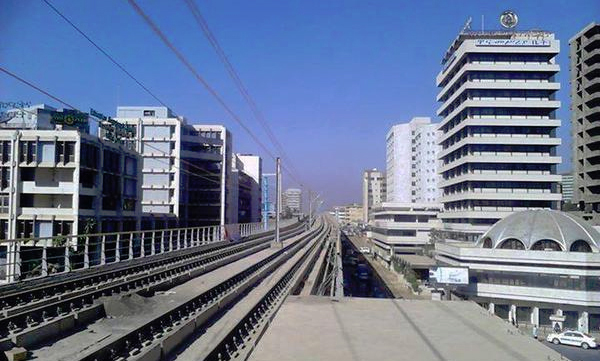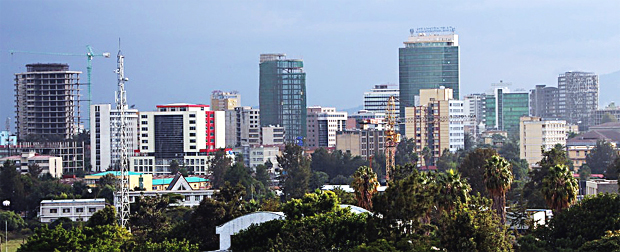Addis Wind of Transformation
By Ismail Einashe
Addis Ababa, Ethiopia – The Ethiopian capital Addis Ababa is going through one of the fastest rates of urban growth in the world. In Amharic ‘Addis Ababa’ means ‘new flower’, and Menelik II founded the city at the end of the 19th century. For much of its history, Addis was a small town, at the centre of an ancient empire.
Today Addis is experiencing a rapid rate of urban transformation, which will see its 4.5 million population double to 8.1 million by 2040. This highlights UN’s estimates that Africa’s global share of urban dwellers will double to 25 per cent in the next 35 years.
Last week, Barack Obama became the first American president to visit Addis Ababa. He addressed leaders at the African Union, a large glistening glass edifice built with Chinese labour and financing. His visit underscores how far Ethiopia has come – from the 1984 famine, which cemented the nation in the West’s popular imagination, to the fastest growing economy on the continent.
The International Monetary Fund (IMF) ranks Ethiopia as among the top five growing economies in the world. Ethiopia has experienced a decade of continuous growth in GDP, averaging 10.3 percent.
Ethiopia has transformed itself over the past decade, and will now spend the equivalent of 10 percent of its GDP annually on infrastructure projects over the course of the next decade. It has also massively reduced poverty- according to the World Bank, Ethiopia reduced its poverty levels by 33 percent since 2000, in large part because of its consistent economic growth and agricultural investment, and what the bank described as Ethiopia’s “pro-poor” investments.
However, Ethiopia still remains one of the poorest nations in the world. Its per capita income is 470 USD, below the regional average. Ethiopia eventually wants to reach middle-income status.
Ethiopia remains a largely agrarian society. It also has Africa’s second largest population at 94.1 million – and which because of the very high fertility rate is expected to rise to 278 million by 2050. Like much of Africa, Ethiopia is young: the median age is just 18.
Some infrastructure projects outside the capital have gained international attention, particularly the Grand Ethiopian Renaissance Dam (GERD), in construction on the Blue Nile, which will be Africa’s largest source of hydro energy.
Construction
But Addis Ababa is at the heart of Ethiopia’s rapid growth, the crown jewel in this China-style infrastructure splurge.
Arriving in Addis, the scale of change in the city is huge: everywhere there’s the hum of construction noise, countless workers roam the streets – and a new metro system, the first in sub-Saharan Africa, is under construction. Addis showcases Ethiopia’s soaring ambitions. There’s a new confidence in the air.
The Addis Ababa and Oromia Special Zone Integrated Development Master Plan is at the heart of the city’s urban change. For two years urban planners sat in an office block in the city to create this plan – which will see surrounding town incorporated into the city, creating one of the largest urban spaces in Africa.
Beer and business opportunities
It seems little can dampen the good mood music in the city. Business confidence is growing. In one of the swanky hotel bars in the Bole area I met a group of Dutch, British and South African brewery specialists who were in Addis Ababa for ‘opportunities’ in the beer industry.
One man, an Afrikaner from South Africa, spoke about how Ethiopia was ‘opening up’; and with its large population, like in Nigeria where he had worked previously, it provided ample opportunities for the multinational beer company he worked for.
They had bought up smaller beer companies across the continent – something other companies did not do, he said, a strategic error. His colleague, a Dutch man, shook his head, saying ‘Heineken passed on an opportunity’. Now, he says, many European beer companies are keen to get a slice of the growing purchasing power of the Ethiopian middle classes. In a city littered with hundreds of bars, it’s easy to see why Africa’s second most populous nation would draw in the investors.
Bole, which gives Addis Ababa’s shining new airport its name, has changed remarkably. I spent some of my childhood here and today it’s barely recognisable. The march of progress should not mean trampling on history and heritage. Sadly much of Addis’ unique architectural history is being eroded.
I returned to Addis at the start of the rainy season. The only area that brings me some comfort is Mekarto, home to the city’s largest market, but even here dramatic change is underway.
The Taitu Hotel, one of the most famous landmarks of the city ever since it was built in the early 1900s, burned down in January. It was depicted in Evelyn Waugh’s 1938 satirical novel Scoop, and later was home to the Jazzamba Lounge, part of the legendary 1960s/70s Ethio-Jazz scene. In some ways, Taitu was a symbol of old Addis that’s disappearing under the weight of progress.
The urban population of Addis has grown nearly three times since the 1970s, but what has been more remarkable is the spatial growth of the city: its land area has expanded to twelve times the size it was in the 1970s.
With growth has come lower population density, as Addis has spread out into an ever-increasing urban sprawl. Now, at the edge of the city new developments litter the earth, some gated communities for the rich, underscoring the growing income inequality in the city.
Knight Frank, a large property consultancy based in London, listed Addis Ababa in its annual wealth report as a city with potential for growth in high net-worth individuals – a group whose population has doubled since 2007 and is expected to double again by 2024.
Ethiopia’s biggest supporter, in Addis and elsewhere, has been China. A new light railway system (LRT), with a price tag of 475 million USD, is being built in the city. Wandering through Addis, the construction of the LRT dominates.
Most of the railway is above ground, new high-ways that rip through the city, so stark and visible in their presence. Young labourers dig up the earth, juxtaposed against the old Addis of shantytowns, where houses made of mud and recycled steel pile on top of each other.

The Chinese are financing this 20 mile LRT system which will furnish Addis with two lines, though there are plans to increase this to four. Some 85 percent of the funding comes from the Exim Bank of China, and the work was contracted out to the China Railway Engineering Corporation.
China is also responsible for the newly completed 481-mile railway, which links landlocked Ethiopia with Djibouti’s Red Sea port. The primary purpose of the line is to export goods from Ethiopia’s fast growing economy.
There are also plans afoot to connect the railway from Djibouti all the way to the Gulf of Guinea – which shows the scale of Chinese ambition in Africa.
Addis is a multi-ethnic cosmopolitan melting pot, home to an increasingly diverse population. The city’ residents take pride in their new city the skyscrapers, roads, and railways the stuff of modernity.
Source: Ethiopian Herald





yekalkidane meder natena new/the land of promis;